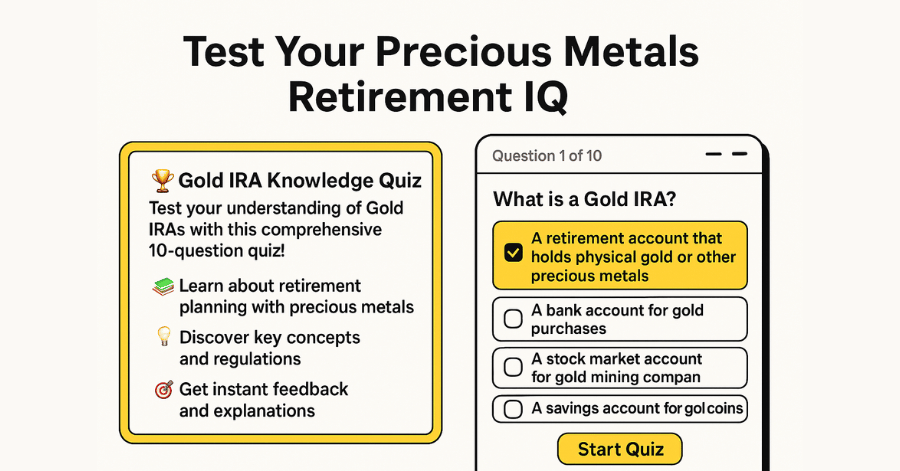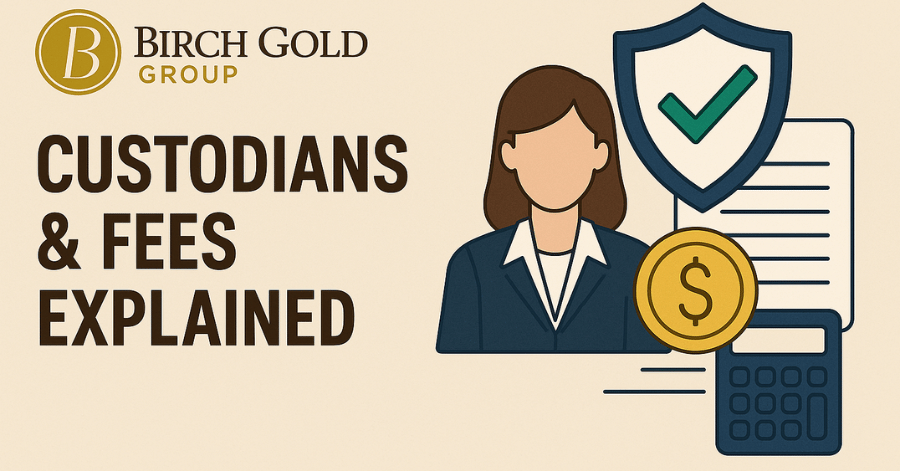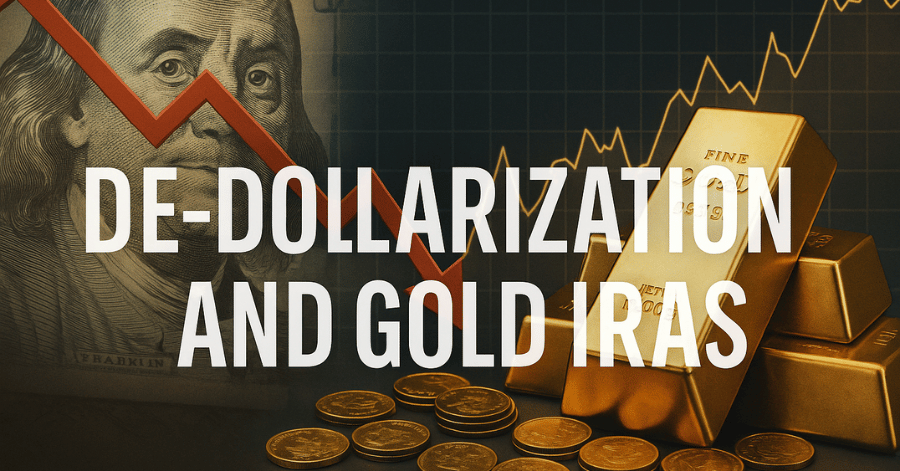Key Takeaways:
- The “Rio Reset” Explained: The article defines the “Rio Reset” as a pivotal BRICS-led movement to challenge U.S. dollar dominance by building a parallel financial system based on local currency trade and new payment networks.
- De-Dollarization Driven by U.S. Vulnerabilities: This global shift is fueled by key U.S. weaknesses, including soaring national debt, inflation risks, and the frequent use of financial sanctions, which pushes nations to seek economic independence.
- Gold as the Cornerstone Asset: BRICS nations are aggressively accumulating massive gold reserves to act as a stabilizer for their new financial architecture, signaling a global return to tangible assets amid currency uncertainty.
- The Outcome is Fragmentation, Not Replacement: The analysis concludes that a complete dollar collapse is unlikely. Instead, the world is heading towards a more fragmented and “multipolar” financial landscape with multiple currency systems operating in parallel.
- How to Protect Your Retirement Savings: For individuals, the core strategy is portfolio diversification. The article repeatedly highlights considering a Gold IRA as a primary tool to hedge against the risks of dollar decline, market volatility, and inflation.
Affiliate Disclosure: To support our mission of providing valuable financial analysis, this page may contain affiliate links. If you follow a link and make a purchase, we may earn a commission at no additional cost to you. We only recommend partners we thoroughly research and trust.
 Introduction: Rio Reset Dollar Shakedown
Introduction: Rio Reset Dollar Shakedown
The world’s financial gears are grinding towards a potentially seismic shift this July in Rio de Janeiro. Where BRICS nations convene for what insiders are dubbing the “Rio Reset.”
More than just a summit. This meeting could accelerate a global de-dollarization drive that’s been gaining quiet momentum. Leaving many to ask: Will the Rio Reset dollar shakedown redefine global economic power? Is it a tremor that will merely rattle the status quo? Critically, what does this mean for your hard-earned retirement savings?
Core Analysis: The Rio Reset Shakedown
The Rio Reset Blueprint
The Rio Reset dollar shakedown isn’t just talk! It’s a multi-pronged strategy years in the making, designed to construct a parallel financial architecture. At its heart are several key initiatives.
Firstly
BRICS nations are aggressively promoting bilateral trade in local currencies, sidestepping the dollar entirely. The shift to local currencies is happening rapidly. For instance, according to Global Times, over 90% of trade settlements between Russia and China are now conducted in rubles and yuan. This is a stark increase from just a few years ago when the dollar dominated their transactions.
This could be driven by various factors, including reduced reliance on the US dollar for international transactions. Increased bilateral trade agreements, and potentially a shift in global economic power. According to FrontierView, countries like the UAE, India, China, Russia, Iran, and Nigeria are increasingly utilizing their national currencies or bilateral currency swap agreements.
Secondly
The development of independent payment systems, often dubbed “BRICS Pay,” aims to offer an alternative to SWIFT. As economist Barry Eichengreen explained in a 2022 analysis for the Center for Strategic and International Studies. “Efforts to develop alternatives to SWIFT are not about replacing the system overnight. It’s about building parallel networks that can insulate countries from sanctions and facilitate a growing share of international transactions.
Thirdly
A coordinated increase in central bank gold reserves acts as a foundational stabilizer for this emerging system. With the World Gold Council regularly reporting substantial net purchases by BRICS central banks.
However, an often underrated technical hurdle is the complex task of harmonizing diverse regulatory frameworks and technological standards across the expanding BRICS+ membership to ensure seamless and secure operation of these new financial highways.
This blueprint shows a clear intent to reduce reliance on traditional Western-led financial infrastructure. Now, let’s examine why the existing system might be vulnerable to such a challenge.
Challenges Facing the BRICS De-Dollarization Effort
While BRICS nations have taken steps to reduce their reliance on the U.S. dollar, several key challenges could slow or limit their progress:
No Unified Currency
Unlike the eurozone, BRICS countries do not share a common currency. This lack of unity makes cross-border trade and settlements more complicated, making it hard to match the convenience and liquidity offered by the U.S. dollar.
Different Economic Goals
The BRICS bloc brings together countries with very different economies, inflation rates, and monetary policies. These differences make it tough to create a unified financial system or a strong alternative to the dollar.
Trust and Stability Issues
The strength of the U.S. dollar comes from deep financial markets and the stability of U.S. institutions. BRICS nations may find it difficult to build similar trust among global investors, especially given ongoing concerns about governance and transparency in some member countries.
Strong Network Effects
The U.S. dollar is deeply embedded in global trade and finance. Shifting away from established practices would require not just technical changes, but also a major shift in global trust and habits—something that tends to happen slowly.
Few Safe Alternatives
Investors around the world still see U.S. Treasury securities as the safest and most liquid assets. BRICS currencies and bonds do not yet offer the same level of safety or accessibility.
These challenges suggest that, while de-dollarization is underway, the U.S. dollar is likely to remain central to global finance for the foreseeable futur
The Incumbent’s Weaknesses
The current dollar-centric global financial system, despite its long reign, isn’t without its chinks in the armor. Creating openings for initiatives like the Rio Reset dollar shakedown. Decades of accumulating U.S. national debt a figure often highlighted by fiscal watchdog reports. This raises persistent questions about long-term sustainability and the dollar’s ultimate backing. Furthermore, periods of significant inflation, such as those seen in recent years, can erode global confidence and the real value of dollar-denominated assets, “hitting retirees particularly hard” as their savings may not keep pace.
 Retirees:
Retirees:
If you’re concerned about how these currency shifts could impact your retirement. It would be wise to explore strategies that can help safeguard your savings. One increasingly popular approach is diversifying with a Gold IRA. A Gold-Backed IRA has historically served as a hedge against inflation and currency risk. To learn how a Gold IRA for a complete beginner could provide stability and protection for your retirement. Visit our detailed guide on Gold IRAs for De-Dollarization. Discover if this time-tested financial shield is right for your future.
Catch Up With The Crowd:
Read our Gold IRAs and Retirement Planning Guide For Top-Notch Insights

Test Your Precious Metals Retirement IQ

Key Accelerant
A key accelerator for seeking alternatives has been the extensive use of financial sanctions. While a powerful foreign policy tool, its frequent application has, according to many geopolitical analysts, pushed nations to actively develop non-dollar channels to secure their trade and financial autonomy.
The BRICS bloc itself, an expanding alliance, stands as the most prominent example of a collective movement actively working to reduce reliance on the dollar in international transactions.
These vulnerabilities create a fertile ground for change. However, the path for any challenger, including the BRICS initiative, is not without its own set of complex problems.
The Rio Reset Dilemma
Despite the clear ambition behind the Rio Reset dollar shakedown, the path to a new global financial order is fraught with internal complexities for the BRICS bloc. One significant dilemma lies in the sheer economic diversity and, at times, divergent national interests of its members. Forging a unified financial front among manufacturing giants, commodity exporters, and nations with varying levels of development requires navigating a complex web of priorities. As “Economic Strategy Institutes” reports often highlight, aligning monetary policy for such a varied group is a Herculean task.
The Unit Explained
Furthermore, while the allure of a gold-backed currency or system like “The Unit” offers a compelling narrative for stability, the practicalities present a major hurdle. Agreeing on gold’s role, valuation, and convertibility mechanisms across multiple sovereign states is a challenge that even proponents acknowledge will take considerable time and trust to resolve.
See Birch Gold for in-depth information about “The Unit.” Explore the concept of The Unit, a potential gold-linked currency from BRICS
Geopolitical undercurrents and historical rivalries within the expanding group also add another layer of complexity. Some financial commentators, like those at Morgan Stanley, suggest that while de-dollarization efforts are notable, a swift replacement of the dollar faces these substantial obstacles. Much like the Eurozone, which experienced its own crises stemming from economic disparities despite closer alignment, the BRICS initiative must overcome these internal contradictions to realize its full potential.
These inherent challenges mean a complete and sudden overhaul is less likely than a gradual evolution. Yet, the very existence of these discussions and initiatives is fueling the rise of alternative financial considerations.
Navigating the Shifting Landscape with a Trusted Partner
With such significant shifts on the horizon, understanding your options is the critical first step. For readers who want a comprehensive breakdown, our dedicated resource details exactly how a partner like Birch Gold can help you protect your savings by explaining their custodian relationships, fee structures, and secure physical storage solutions.
See how Birch Gold’s custodians handle fees and secure physical storage
Parallel Systems Rising
The Perceived Vulnerabilities
The discussions surrounding the Rio Reset dollar shakedown and the perceived vulnerabilities of incumbent systems are naturally fueling interest in parallel financial avenues. Unsurprisingly, many are turning to time-tested assets, with physical gold bullion leading the charge as a tangible store of value outside traditional banking and currency structures. Central banks globally, particularly within the BRICS sphere, have significantly increased their gold acquisitions over the past few years, as consistently reported by entities like the World Gold Council.
This institutional flight to gold is mirrored by a growing individual interest, with “Gold IRA specialists” noting a clear uptick in inquiries about holding physical precious metals within retirement accounts. Even in many cultures, gold jewelry continues its traditional role as a readily transferable form of wealth.
Rio Reset Observation
Beyond gold, we’re observing the steady development of regional payment networks and digital platforms designed to facilitate trade outside the U.S. dollar framework. While still in various stages of adoption, initiatives like the conceptualized “BRICS Pay” aim to settle international transactions using member-nation currencies or new units of account. Data from “Cross-Border Trade Institutes“ suggests a consistent, albeit gradual, increase in bilateral trade volumes settled in local currencies among several emerging market blocs, indicating a slow but deliberate architectural shift and potential decline of the dollar.
The momentum behind these parallel systems underscores a global quest for financial diversification and resilience. This leads to the critical question: What does the future hold, and how can individuals prepare?
If you’re seeking actionable strategies to protect your wealth amid these shifts, our in-depth post breaks down how gold and other alternative assets can serve as a shield against dollar-related risks. Explore practical steps and expert insights by visiting our comprehensive guide below.
 Gold’s Performance & Role During Extreme Market Volatility
Gold’s Performance & Role During Extreme Market Volatility
Rio Reset $ Shakedown: Forecasts & Actionable Insights
Peering into the financial crystal ball, especially amidst the tremors of a potential Rio Reset dollar shakedown, requires a sober look at expert projections and a pragmatic approach to personal financial strategy.
Several major financial institutions are painting a bullish picture for gold through 2025 and beyond. For instance, analysts at JP Morgan have projected gold prices could test $3,000 per ounce in 2025, while UBS has forecasted figures potentially reaching $3,200 or even higher, citing factors like anticipated market volatility and strong central bank buying. Some outlets report Goldman Sachs also sees gold reaching new highs, potentially around $3,700 by the end of 2025, driven by central bank demand and eventual ETF inflows as interest rates might decline. These forecasts, while varying in specific numbers, generally point to sustained or increased value for gold amidst global economic uncertainties.
For investors and  those planning for retirement, the key takeaway from these forecasts and the broader de-dollarization narrative is the heightened importance of diversification. Financial advisors often recommend that during periods of currency shifts or heightened economic uncertainty, individuals should review their
those planning for retirement, the key takeaway from these forecasts and the broader de-dollarization narrative is the heightened importance of diversification. Financial advisors often recommend that during periods of currency shifts or heightened economic uncertainty, individuals should review their  asset allocation. While specific percentages vary based on individual risk tolerance and financial goals, considering an allocation to assets that traditionally act as a store of value, such as physical gold held within a Gold IRA, becomes a more prominent part of the conversation. This isn’t about abandoning traditional investments but rather about building resilience into a long-term financial plan.
asset allocation. While specific percentages vary based on individual risk tolerance and financial goals, considering an allocation to assets that traditionally act as a store of value, such as physical gold held within a Gold IRA, becomes a more prominent part of the conversation. This isn’t about abandoning traditional investments but rather about building resilience into a long-term financial plan.
The shifting global landscape underscores the need for vigilance and adaptability in managing one’s savings.
Conclusion: The Rio Reset $ Shakedown
More than just a summit
The Rio Reset dollar shakedown represents more than just a summit; it signals an undeniable acceleration towards a multipolar global financial landscape. While the BRICS nations’ ambitious blueprint to challenge dollar dominance faces considerable internal dilemmas and the incumbent system’s deep roots mean an overnight revolution is unlikely, the trend towards de-dollarization and the search for alternatives is palpable. The world isn’t necessarily witnessing the imminent collapse of one system but rather the potential fragmentation and emergence of parallel structures, creating both uncertainty and opportunity.
Your Resilient Financial Foundation
For individuals charting their financial future, especially concerning retirement, this evolving environment underscores the timeless wisdom of diversification. In times of currency shifts and heightened geopolitical flux, exploring assets like physical gold, perhaps held within the tax-advantaged structure of a Gold IRA, becomes a prudent consideration for those looking to safeguard their savings against potential erosion. Ultimately, the Rio Reset dollar shakedown won’t necessarily create a single new hegemon—it will likely fragment the existing order. The wisest approach is not to predict the exact outcome, but to build a resilient financial foundation prepared to adapt.
The Next Step To Consider
For those ready to take the next step, you can connect directly with Birch Gold. As our trusted partner in precious metals, they provide an official, complimentary information kit to help you get started.

Affiliate Disclosure: To support our mission of providing valuable financial analysis, this page may contain affiliate links. If you follow a link and make a purchase, we may earn a commission at no additional cost to you. We only recommend partners we thoroughly research and trust.
FAQs: The Rio Reset Dollar Shakedown
Q: What is the “Rio Reset” that’s being talked about?
A: The “Rio Reset” refers to the significant discussions and potential financial shifts anticipated around the BRICS nations’ summit in Rio de Janeiro. It primarily involves efforts by these countries to increase trade in their own currencies and develop financial systems that are less reliant on the U.S. dollar, potentially altering the global economic landscape.
Q: How might the Rio Reset impact my 401(k) or IRA?
A: If initiatives from the Rio Reset lead to a decreased global demand for the U.S. dollar, it could potentially devalue the dollar. For your retirement savings, this might mean the purchasing power of your dollar-denominated assets in a 401(k) or IRA could diminish over time, and you might see increased market volatility.
Q: Why is gold a major topic of conversation concerning the Rio Reset?
A: Gold has historically been viewed as a store of value and a hedge against inflation and currency devaluation. With potential shifts in global currency dynamics, like those discussed with the Rio Reset, gold is seen by many—including central banks of BRICS nations—as a stable asset that can help preserve wealth when traditional currencies face uncertainty.
Q: What is a Gold IRA, and how does it fit into these concerns?
A: A Gold IRA is a type of self-directed Individual Retirement Account that allows you to hold physical gold (and other approved precious metals) as part of your retirement savings. In the context of the Rio Reset and potential dollar devaluation, a Gold IRA can offer a way to diversify your portfolio with a tangible asset that may hold its value differently than paper assets.
Q: Is it difficult to include gold in my existing retirement plan?
A: Many people can convert portions of their existing IRAs or 401(k)s into a Gold IRA through a process called a rollover, often without tax penalties. Financial specialists in precious metals can typically guide you through the options and paperwork involved to ensure it’s done correctly according to IRS rules.
